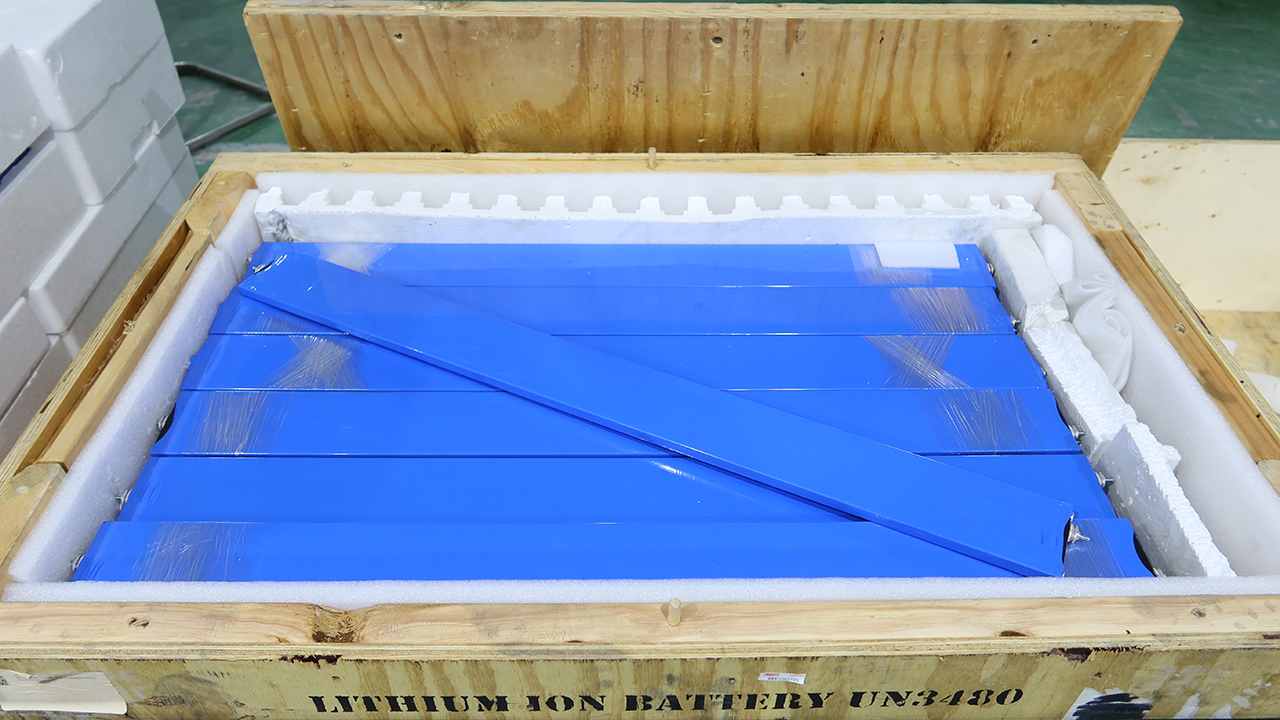At the 2020 Forum of Hundreds of People’s Association, BYD’s chairman announced the development of a new lithium iron phosphate battery. This battery is set to increase the energy density of battery packs by 50% and will enter mass production for the first time this year.
What is the Reason Behind the Name “Blade Battery”?
The name “blade battery” comes from its shape. These batteries are flatter and more elongated compared to traditional square batteries, resembling the shape of a blade.
The “blade battery” refers to a large battery cell over 0.6 meters long, developed by BYD. These cells are arranged in an array and inserted into the battery pack like blades. This design improves the space utilization and energy density of the power battery pack. Additionally, it ensures that the battery cells have a sufficiently large heat dissipation area, allowing internal heat to be conducted to the outside, thereby accommodating higher energy density.
Blade Battery Technology
BYD’s blade battery technology employs a new cell length to create a flatter design. According to BYD’s patent, the blade battery can reach a maximum length of 2500mm, which is more than ten times that of a conventional lithium iron phosphate battery. This significantly enhances the efficiency of the battery pack.
Compared to rectangular aluminum case battery solutions, blade battery technology also offers better heat dissipation. Through this patented technology, the specific energy density of a lithium-ion battery within an ordinary battery pack volume can be increased from 251Wh/L to 332Wh/L, a more than 30% increase. Additionally, because the battery itself can provide mechanical reinforcement, the manufacturing process of the packs is simplified, reducing manufacturing costs.
The patent allows for multiple single cells to be arranged side by side in a battery pack, saving both material and labor costs. It is expected that the overall cost will be reduced by 30%.
Advantages Over Other Power Batteries
In terms of positive and negative electrode materials, the most widely used power batteries on the market today are ternary lithium batteries and lithium iron phosphate batteries, each with its own advantages. Ternary lithium-ion batteries are divided into ternary-NCM (nickel-cobalt-manganese) and ternary-NCA (nickel-cobalt-aluminum), with ternary-NCM occupying most of the market share.
Compared to ternary lithium batteries, lithium iron phosphate batteries have higher safety, longer cycle life, and lower costs, but their energy density has less room for improvement.
If the low energy density of lithium iron phosphate batteries could be improved, many issues would be resolved. While this is theoretically possible, it is quite challenging. Therefore, only CTP (cell to pack) technology can maximize the volume-specific energy density of the battery without changing the positive and negative electrode materials.
Reports indicate that the weight-specific energy density of BYD’s blade battery can reach 180Wh/kg, about 9% higher than before. This performance is comparable to the “811″ ternary lithium battery, meaning the blade battery maintains high safety, stability, and low cost while achieving the energy density of high-level ternary lithium batteries.
Although the weight-specific energy density of BYD’s blade battery is 9% higher than the previous generation, the volume-specific energy density has increased by as much as 50%. This is the true advantage of the blade battery.
BYD Blade Battery: Application and DIY Guid
Applications of BYD Blade Battery
1. Electric Vehicles (EVs)
The primary application of the BYD Blade Battery is in electric vehicles. The battery’s elongated and flat design allows for higher energy density and better space utilization, making it ideal for EVs. The increased energy density means longer driving ranges, which is a crucial factor for EV users. Additionally, the improved heat dissipation ensures safety and stability during high-energy operations.
2. Energy Storage Systems
Blade batteries are also used in energy storage systems for homes and businesses. These systems store energy from renewable sources like solar and wind power, providing a reliable backup during outages or peak usage times. The high efficiency and long cycle life of the Blade Battery make it an excellent choice for these applications.
3. Portable Power Stations
For outdoor enthusiasts and those needing portable power solutions, the BYD Blade Battery offers a reliable and durable option. Its lightweight design and high energy capacity make it suitable for camping, remote work sites, and emergency power supplies.
4. Industrial Applications
In industrial settings, the Blade Battery can be used to power heavy machinery and equipment. Its robust design and ability to withstand extreme conditions make it a dependable choice for various industrial applications.
The BYD Blade Battery offers numerous advantages for various applications, from electric vehicles to energy storage systems. With careful planning and attention to detail, creating your own Blade Battery system can be a rewarding DIY project.
Post time: Jun-28-2024








